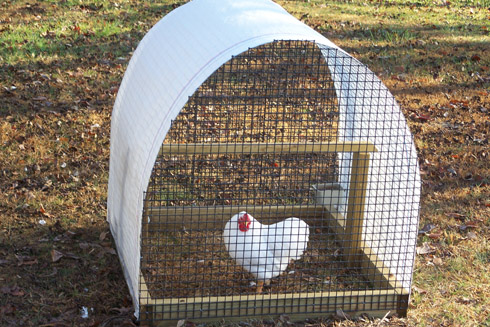 |

|
Currently there are no events or updates to display. |

A Range Shelter will Keep Showbirds Fresh Birds that are shown often sometimes get stale and lose their bloom. One way to freshen them is to allow them out on pasture where they can nibble on grass, weeds, and the occasional bug and benefit from the sunshine. The problem often is one of security, especially if the birds are to remain overnight without the protection of their secure permanent quarters. There are a number of designs for shelters that can be moved to fresh grass regularly but protection from predators is often a problem. Pictured is such a shelter that seems secure from any predator short of a cougar or bear. The frame is made of treated lumber and the wire is one half inch welded wire covered with plastic. It is bent into a semi circular shape and end pieces are fashioned of the same wire. Covering the wire is a cloth made of fiberglass to provide shade and keep the rain off of the birds. The pen pictured is four feet square but the shelter could be made larger. A perch is attached to the frame so that chickens can perch off of the ground at night. Paul Ashbrook saw the basic design at the home of another fancier and built his of the material described above. The shelter can be used for chickens or small ducks in the size pictured. It is heavy enough that a predator could not lift it up to get under it and is light enough to be easily dragged to a new location to keep the grass fresh. The wire mesh used should be no larger than 1/2 inch to prevent racoons from reaching through the wire.
Last updated: 08-02-2010 |
Copyright © 1997 - 2025 Acorn Hollow Bantams. All Rights Reserved. | Terms of Use | Privacy Policy


